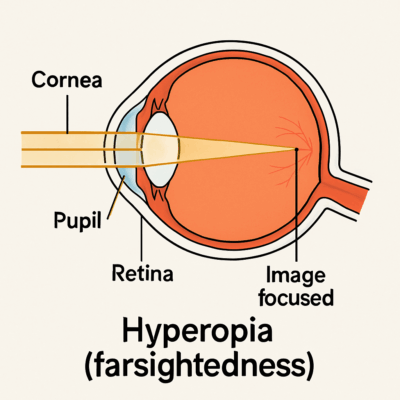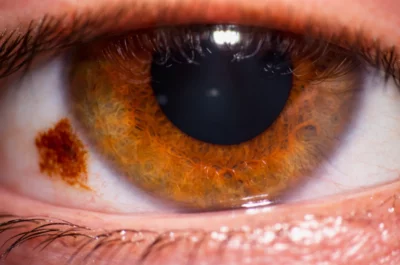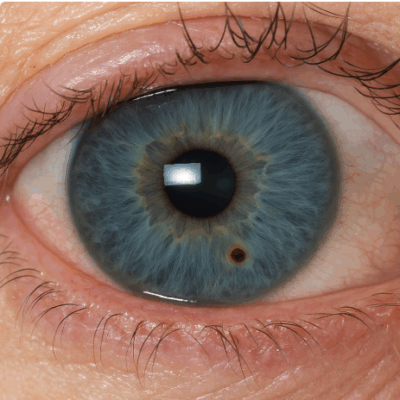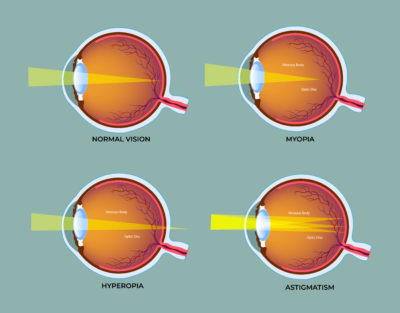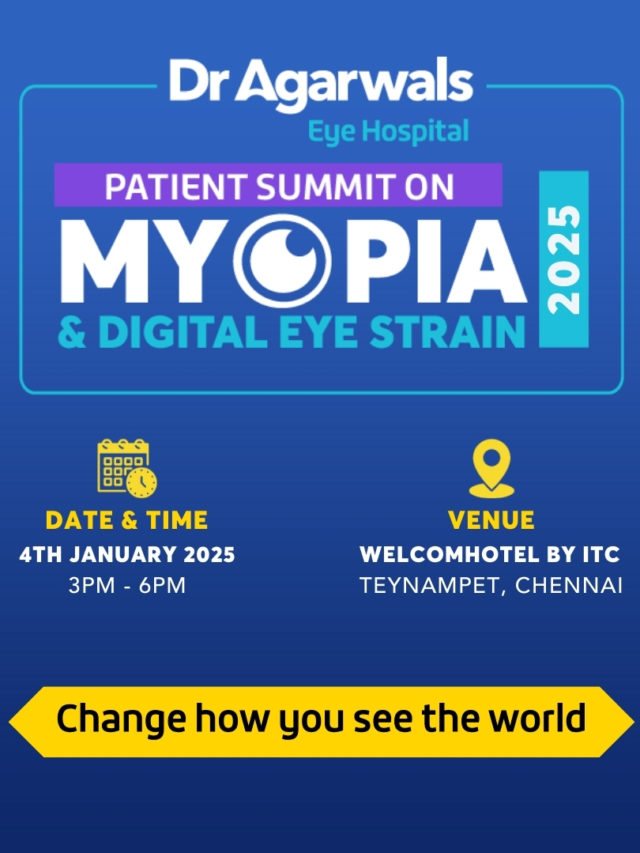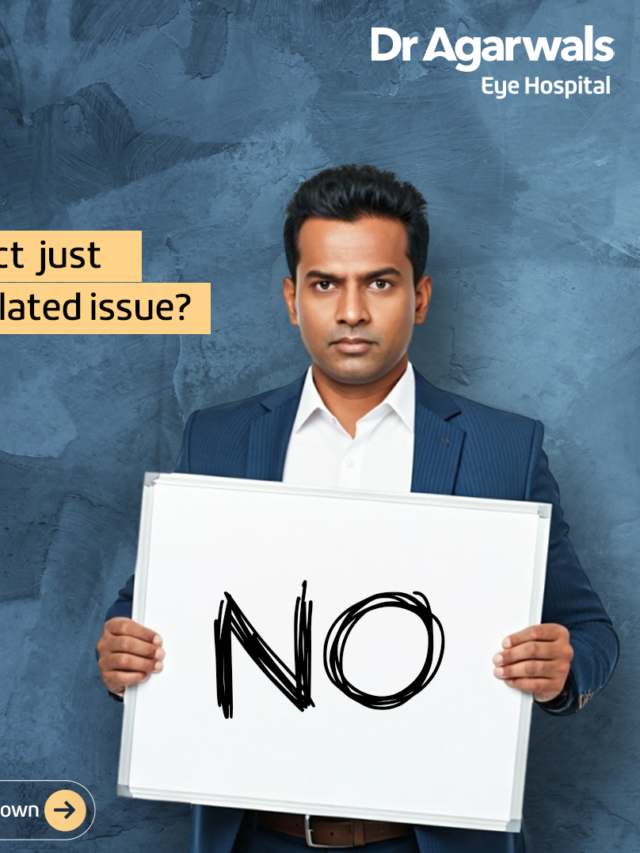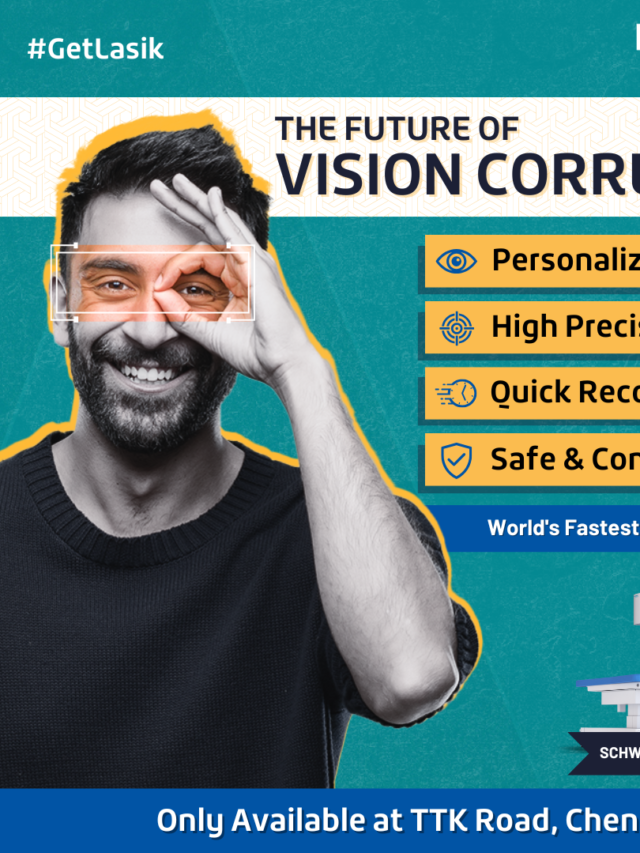Many people use “nearsighted” and “farsighted” interchangeably with terms like myopia and hyperopia, but understanding the difference between myopia and hypermetropia is essential for proper eye care.
This guide explores the myopia vs hyperopia debate, explaining how each condition affects vision, what causes them, and how they present symptoms so you can spot signs early and seek help promptly.
What is Myopia?
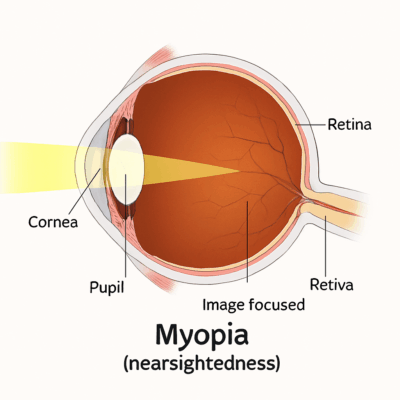
Myopia, or nearsightedness, is a refractive error where distant objects appear blurry while close objects remain clear. It occurs when the eyeball is too long or the cornea is too curved, causing light to focus in front of the retina rather than directly on it.
Known for progressing during childhood and adolescence, myopia causes include genetic predisposition and excessive near-work activity like reading, screen time, or homework.
What is Hyperopia?
Hyperopia, also known as hypermetropia or farsightedness, occurs when the eyeball is too short or the cornea too flat, causing light to focus behind the retina. Near objects appear blurry, while distant ones may remain clearer.
Hyperopia causes include hereditary factors and developmental variations. Many individuals compensate through accommodation, remaining asymptomatic until middle age or older when symptoms surface.
Myopia vs Hyperopia: Key Differences
Understanding the difference between myopia and hypermetropia is essential for accurate diagnosis and appropriate vision correction. These two refractive errors affect vision in different ways, and each has its own causes, symptoms, and treatment methods.
|
Aspect |
Myopia (Nearsightedness) |
Hyperopia (Farsightedness) |
|
Causes |
Caused by the eyeball being too long or the cornea being too curved. |
Caused by the eyeball being too short or the cornea having too little curvature. |
|
Symptoms |
Blurred distance vision, squinting, eye strain, and headaches. |
Blurred near vision, eye fatigue, especially after close work, and occasional eye strain. |
|
Appearance |
Individuals may squint to see distant objects. |
Individuals may have difficulty reading or seeing nearby items without strain. |
|
Nature of the Condition |
Affects ability to see distant objects clearly; near vision is usually unaffected. |
Affects ability to see nearby objects clearly; distance vision is often better. |
|
Risk Factors |
Genetic predisposition, prolonged screen time, and lack of outdoor activities. |
Ageing, family history, and certain medical conditions like diabetes. |
|
Diagnosis |
Identified through comprehensive eye exams, including visual acuity tests and refraction. |
Detected with similar diagnostic tools focusing on reading vision and overall eye health. |
|
Treatments |
Eyeglasses, contact lenses, or laser correction (e.g., LASIK). |
Convex lenses, contact lenses, or refractive surgery in some cases. |
|
Prevention |
Limiting screen time, engaging in regular outdoor activity, and undergoing routine eye check-ups. are beneficial |
Managing chronic conditions, using correct lenses, and regular eye examinations. |
When to See an Eye Specialist for Myopia or Hyperopia
Schedule an appointment if you or your child experiences persistent blurry vision at any distance, frequent headaches, or eye strain that affects daily activities like reading or driving. Early detection, even during routine school vision checks, allows for timely correction with glasses, contacts, or treatments like laser surgery if appropriate.
Regular eye care safeguards long-term visual health and helps manage refractive changes as they arise. For further reading on surgical correction of refractive errors, explore our page on Cataract Surgery (though typically related to lens opacity, it shares procedural relevance). For pediatric or general eye care tips, refer to our Eye Tips section.
Conclusion
In conclusion, understanding the differences between myopia vs hyperopia is vital for early detection and effective vision correction. Whether you’re managing myopia causes like screen overuse or addressing hyperopia linked to ageing or genetics, timely diagnosis and appropriate treatment can significantly improve quality of life.
If you experience blurry vision, eye strain, or frequent headaches, consult an eye specialist. With options like glasses, contact lenses, and advanced correction techniques, managing myopia and hypermetropia is both achievable and essential for long-term eye health.
